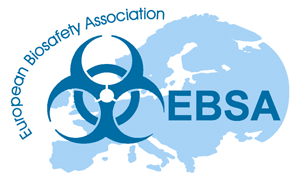About Pre conference course D. Personal protection equipment (PPE) – making optimal choices
Pre conference course D. Personal protection equipment (PPE) – making optimal choices
Persons that followed the online EBSA course on PPE in 2021, hosted by EBSA, can choose to either follow the whole course (1 day) or only the practical course (1/2 day PM).
Instructors
Per Staugaard and Ulrika Allard Bengtsson
Bullet points
- Personal Protective equipment in the framework of [bio-] occupational health strategy
- Gloves
- Respiratory protection
- Protective clothing
- Other PPE (shoe covers, ear and eye protection)
- Materials, Sizing and Design
- Fit testing of Face masks
- Donning and Doffing exercise
Course description
This course will both give a theoretical overview of the use of personal protective equipment (PPE) in BSL2 and BSL3 laboratories and also the practical experience with different sorts of PPE.
The theoretical part of the course will focus on why (risk assessment), how and when to choose adequate PPE (gloves, safety glasses, lab coats, respiratory protection, etc.) for different purposes. We will also go through the importance and how to perform fit-testing of respirators.
In the practical part we will bring a wide selection of PPE, all attendees can try and use different materials, sizes and designs. Donning and Doffing [= putting on and off] can be practised.
For those participants that participated in the online EBSA course on PPE in 2021 we offer a special discount – see details on the EBSA website (link?).
After this course the participants will have knowledge about why, when and how to use PPE – “using the right PPE in the right way and the right situation”.
This course is particularly suitable for laboratory managers, biosafety professionals etc, responsible for supervision and for safety standards and training of personnel. Previous experience is not required.
Learning outcomes
After this course the participant
- can evaluate the necessity of PPE and how it should be used, on basis of a preliminary Risk assessment,
- understands the obtained level of protection,
- can make a choice between available protective gear,
- knows differences between single use and reusable equipment,
- is aware of the need for basic maintenance of reusables,
- is aware of the false sense of safety of low protective gear.
CWA 16335:2011, annex C reference
- C2.1.2.10. Personal Protective Equipment
